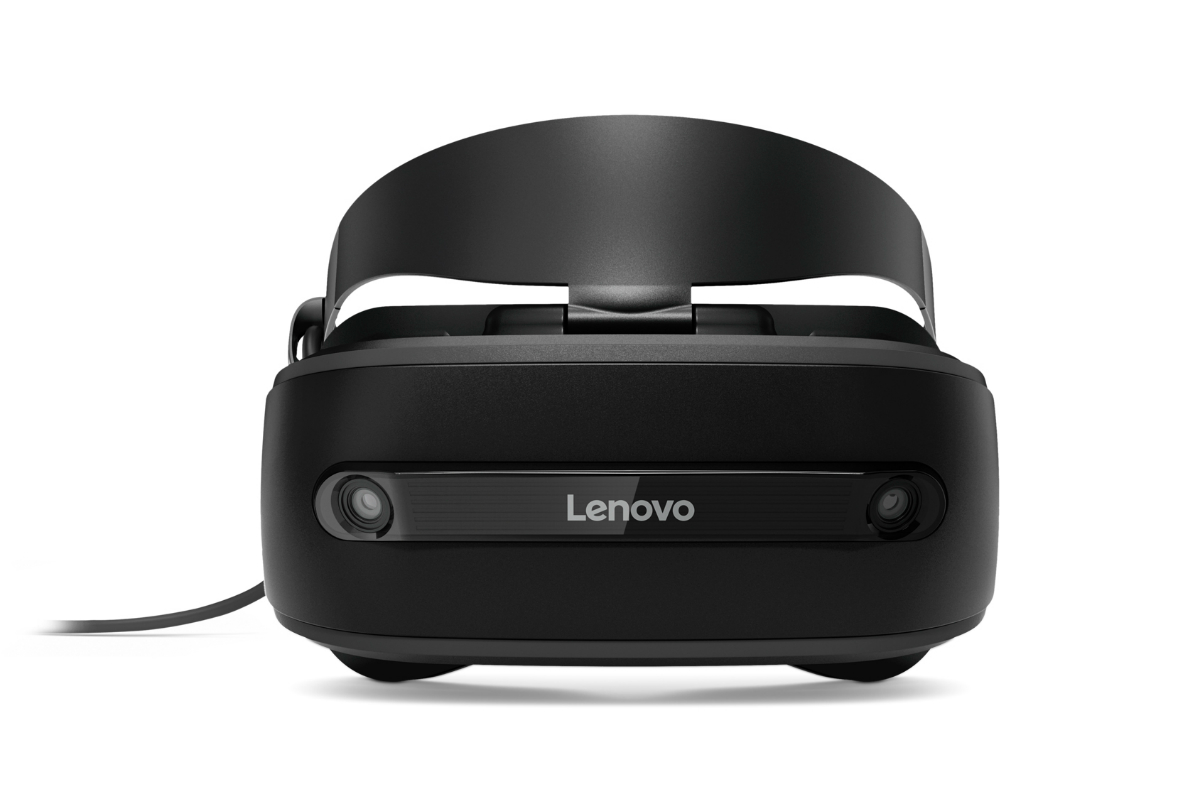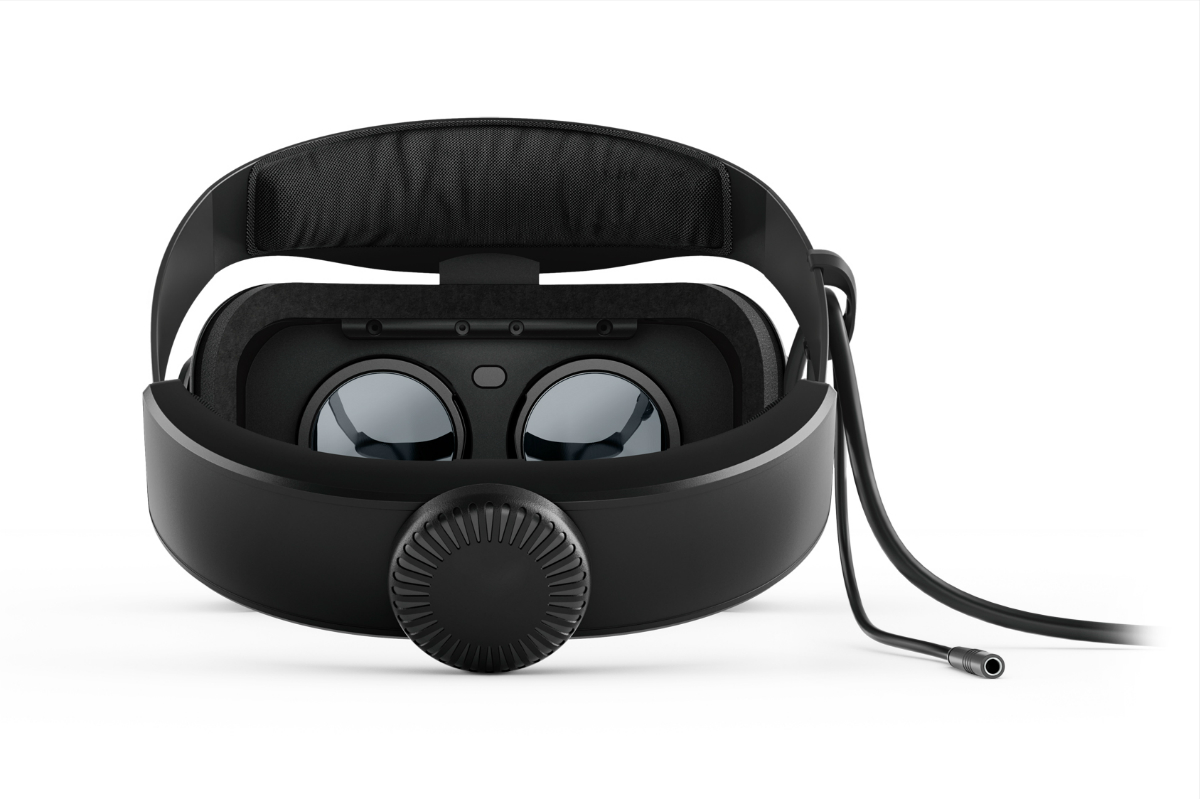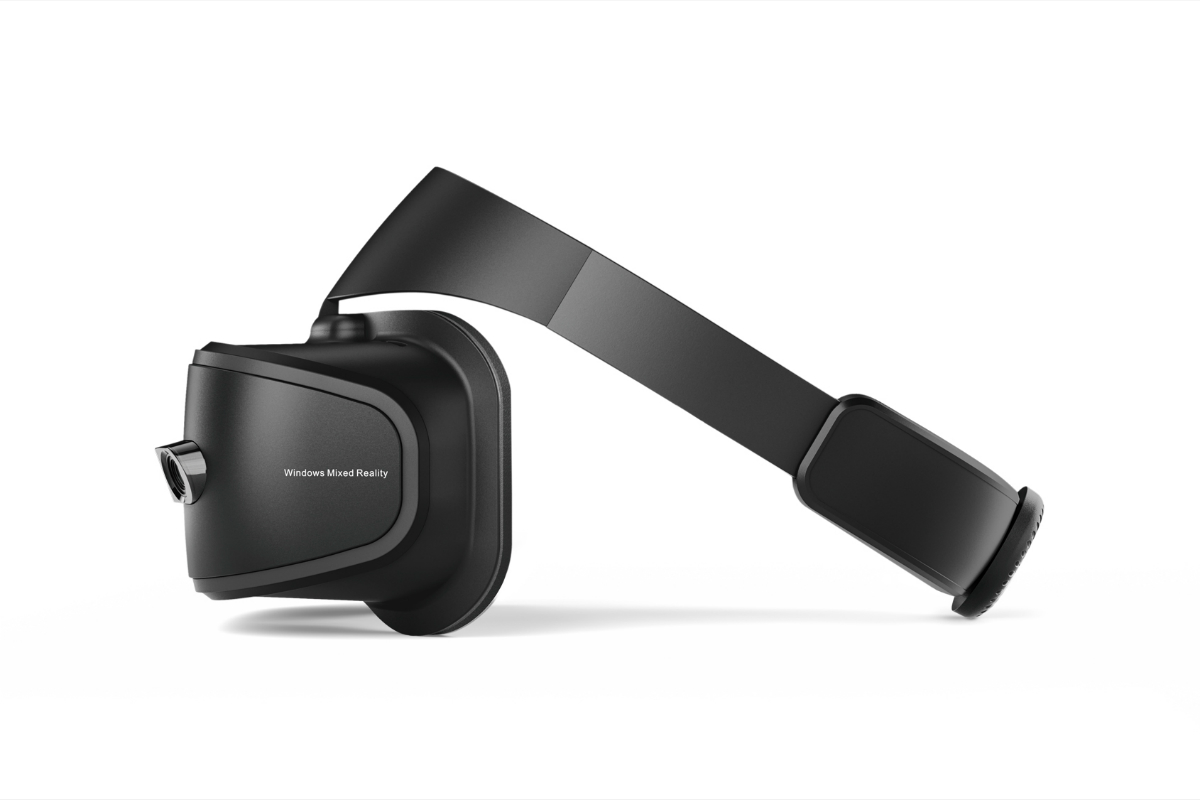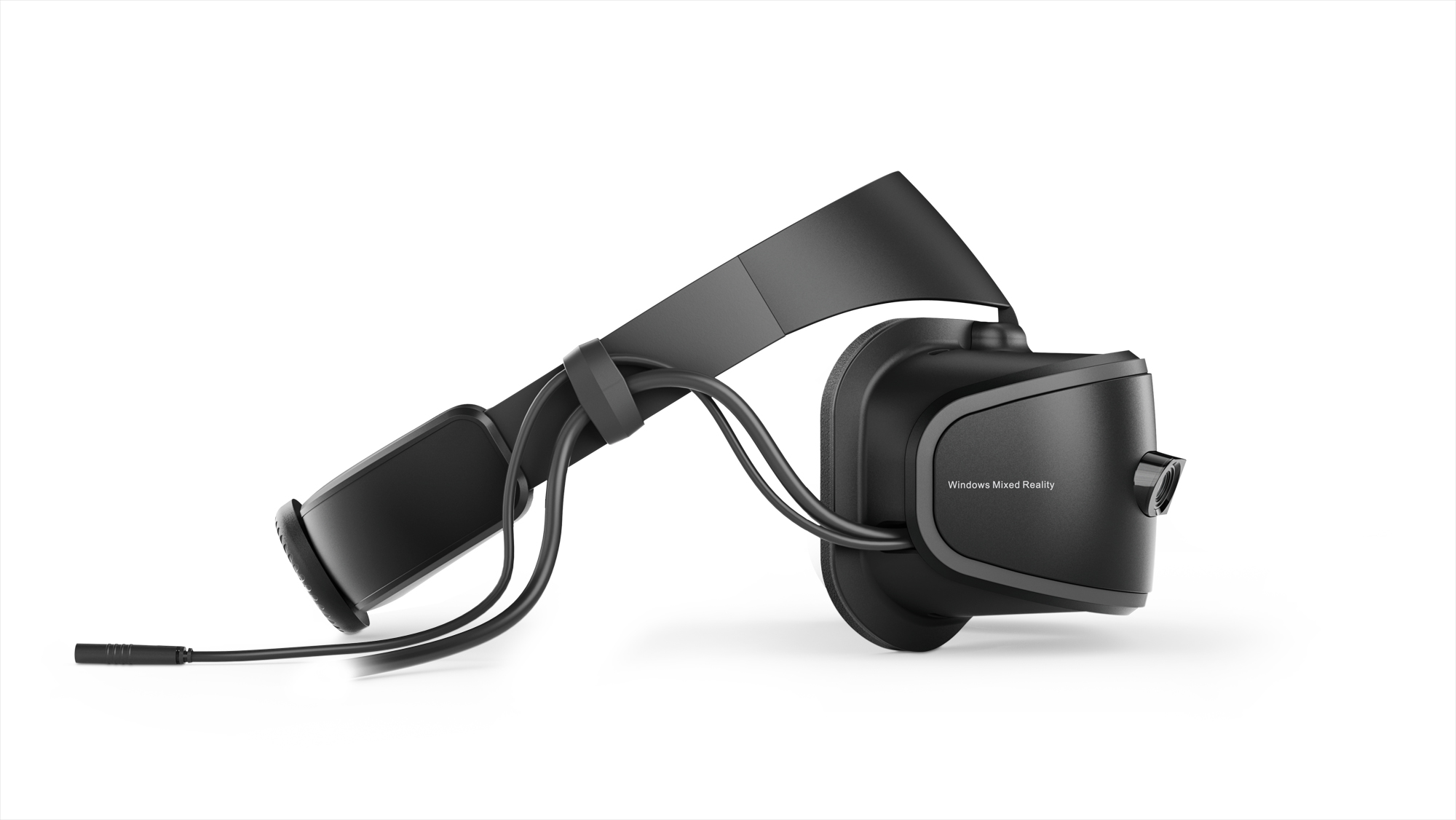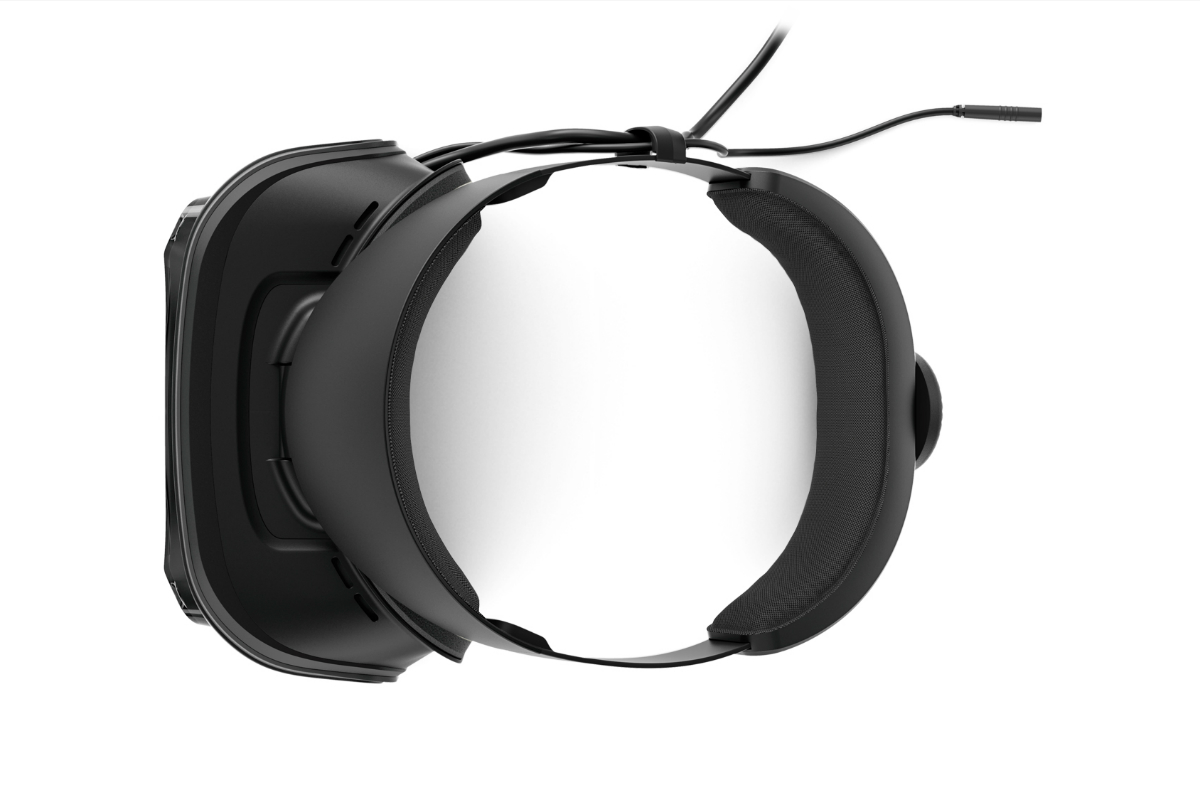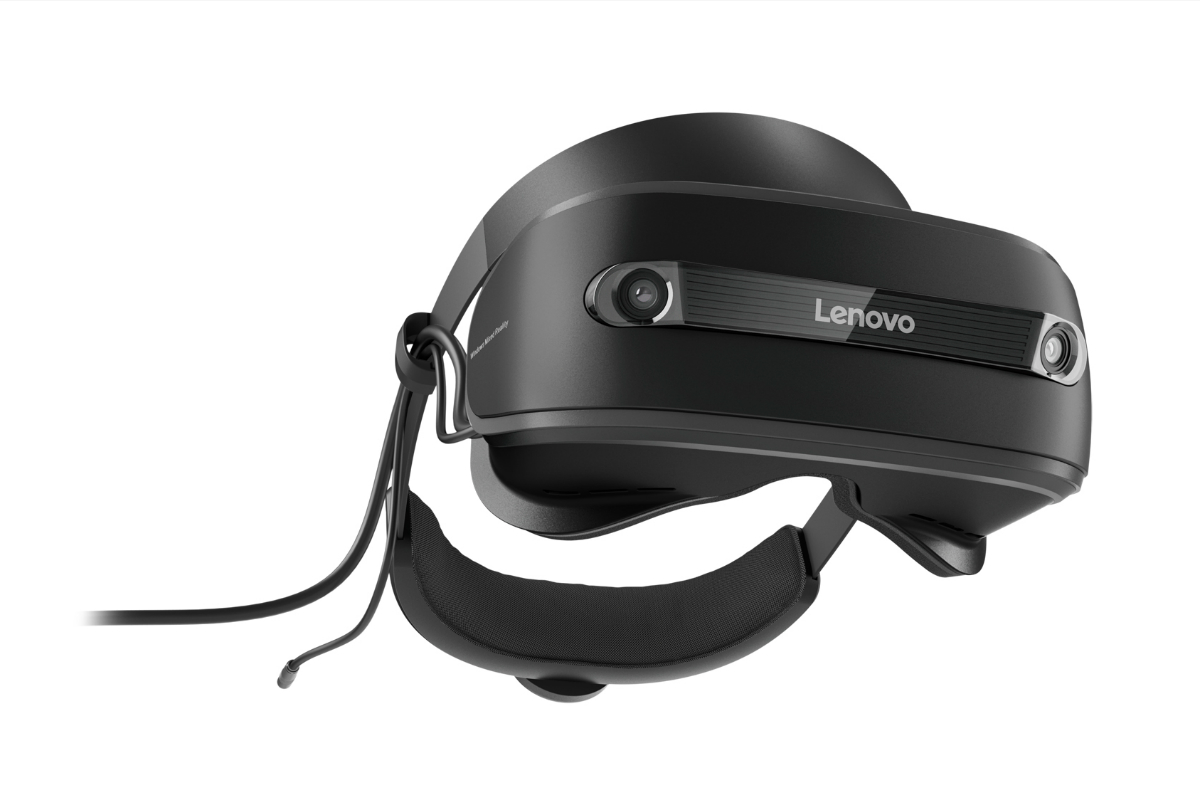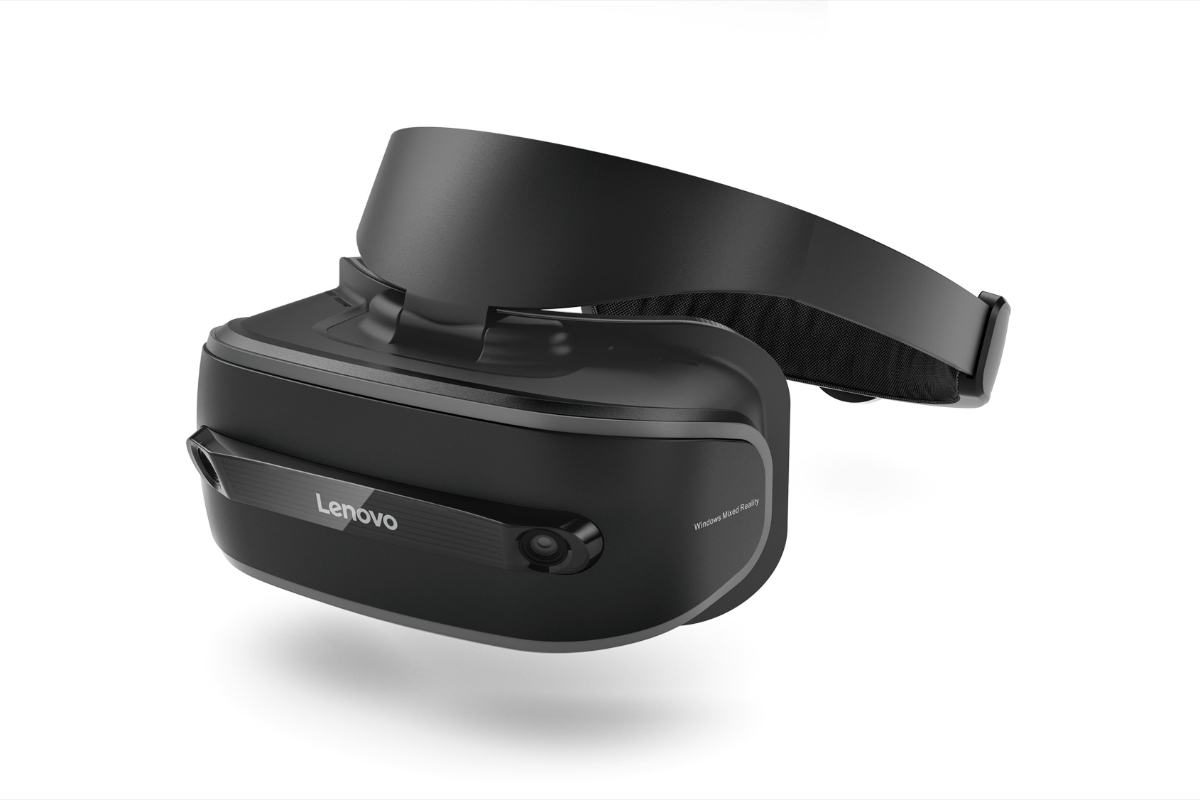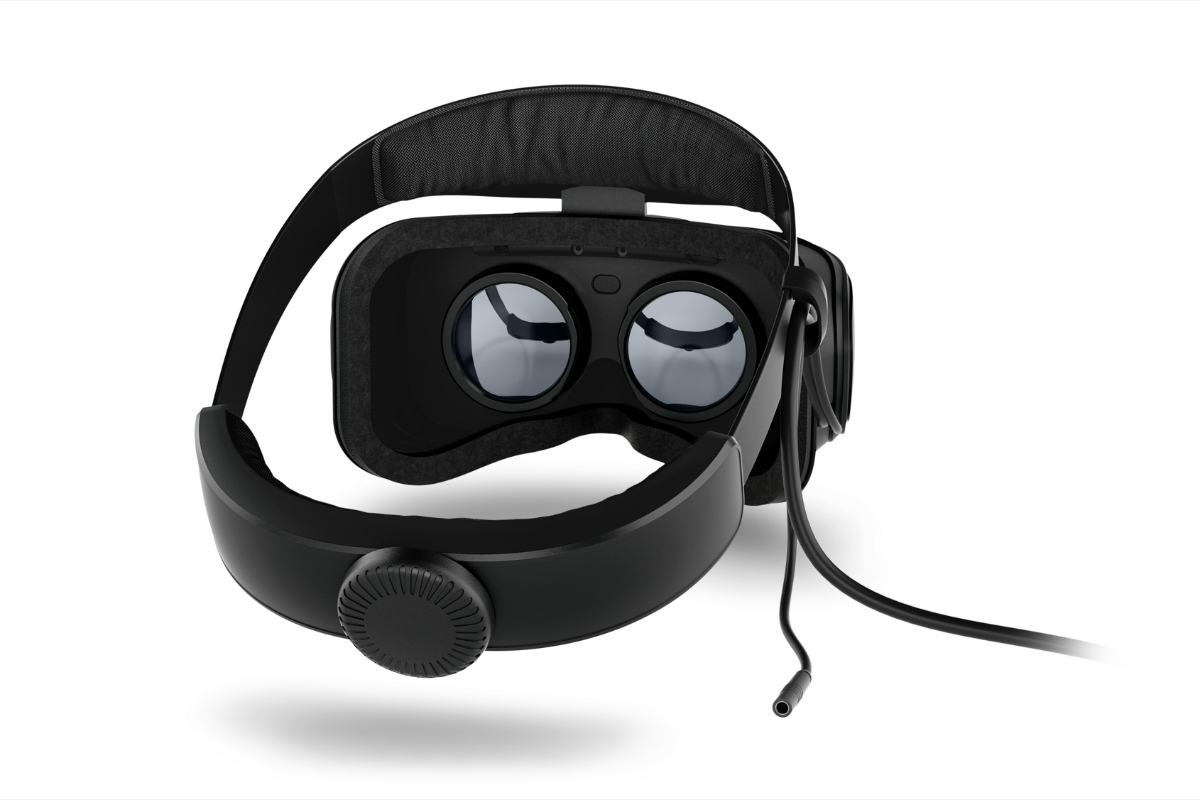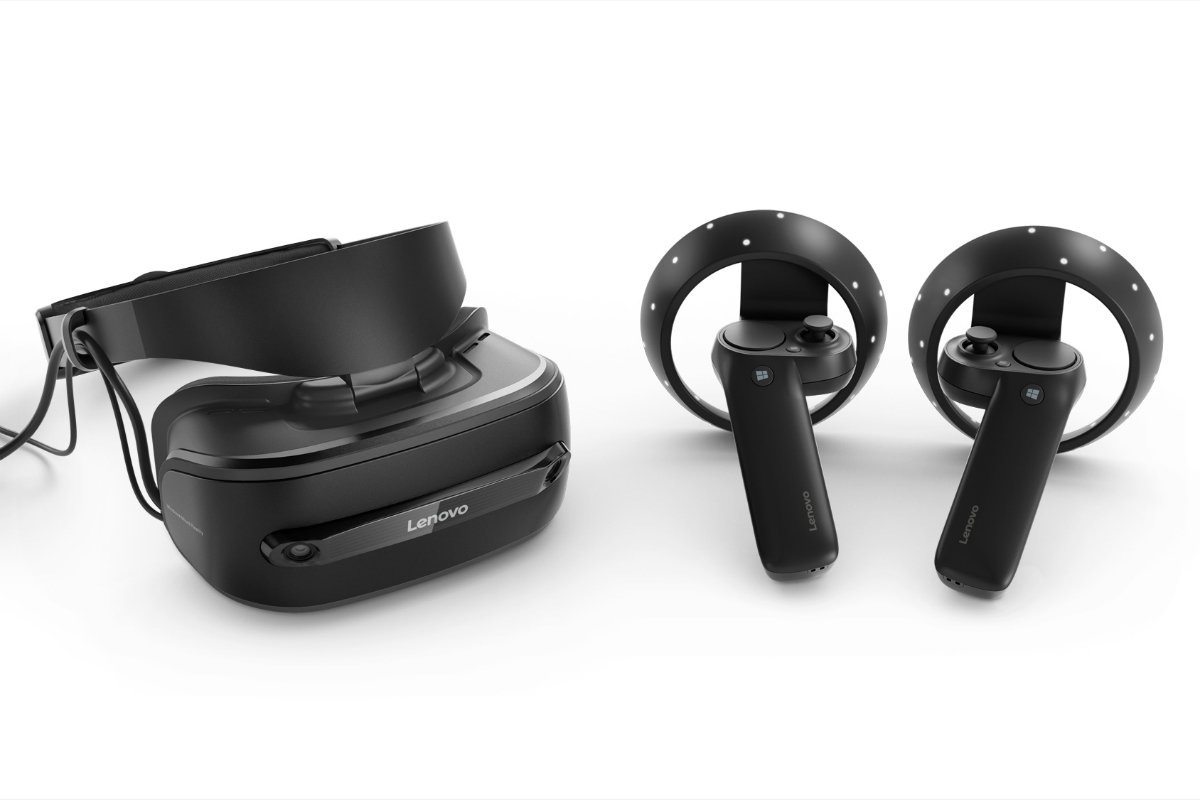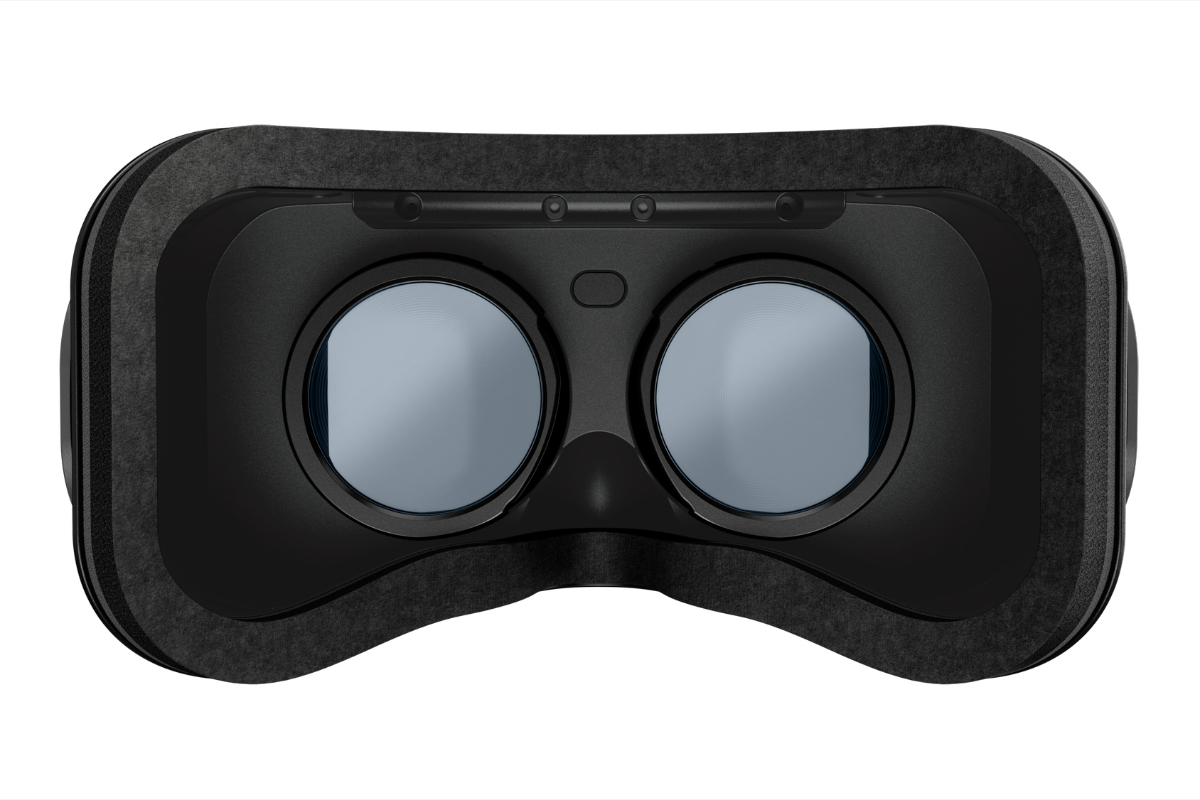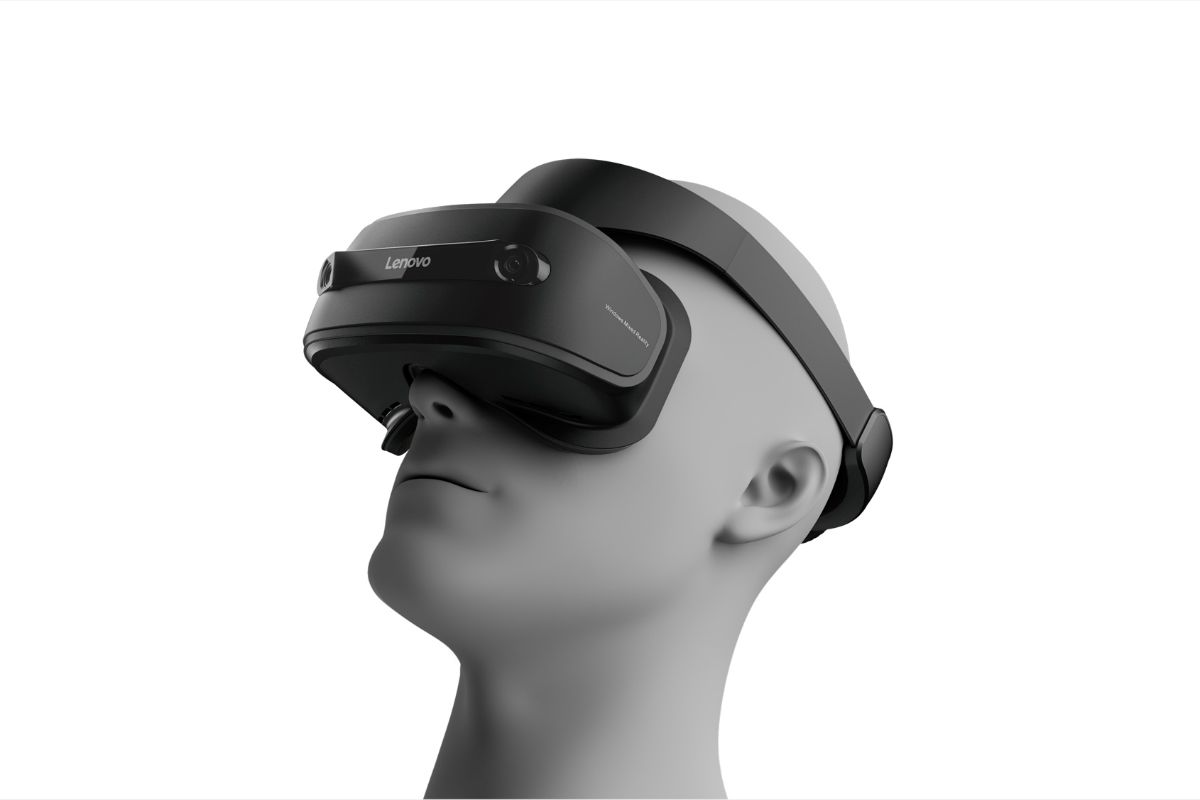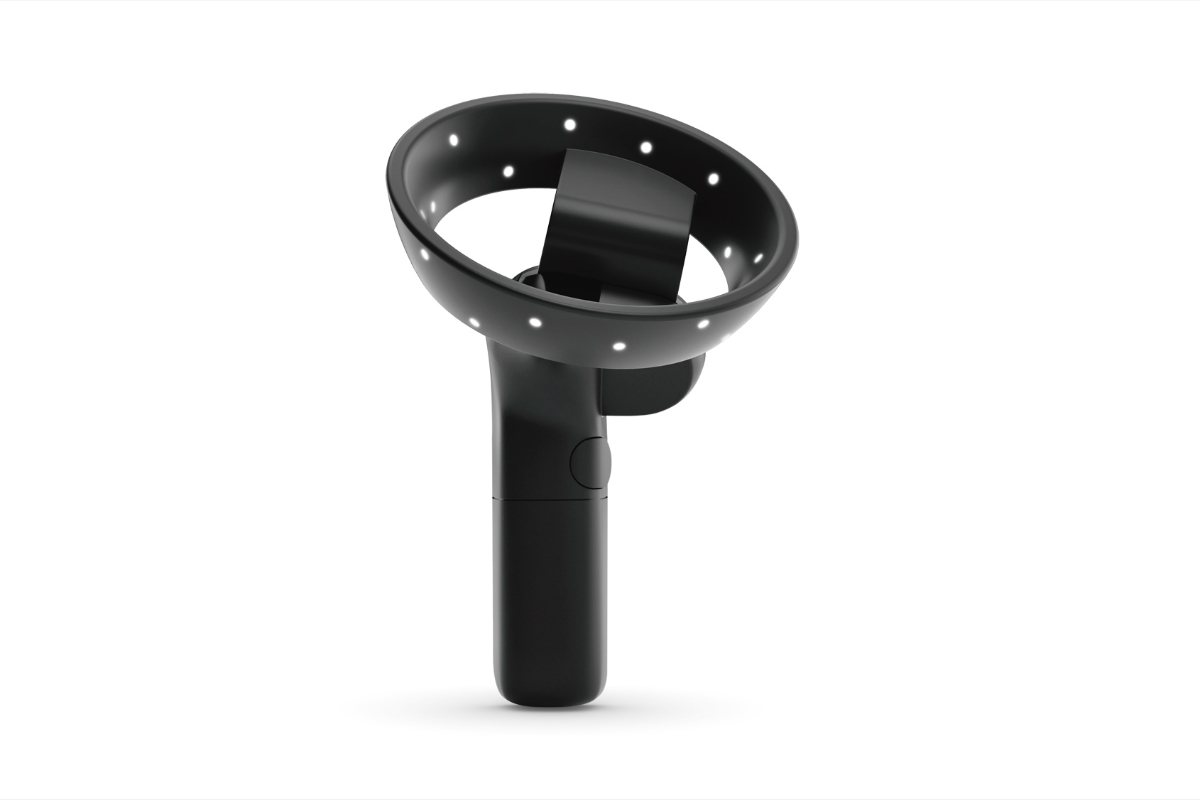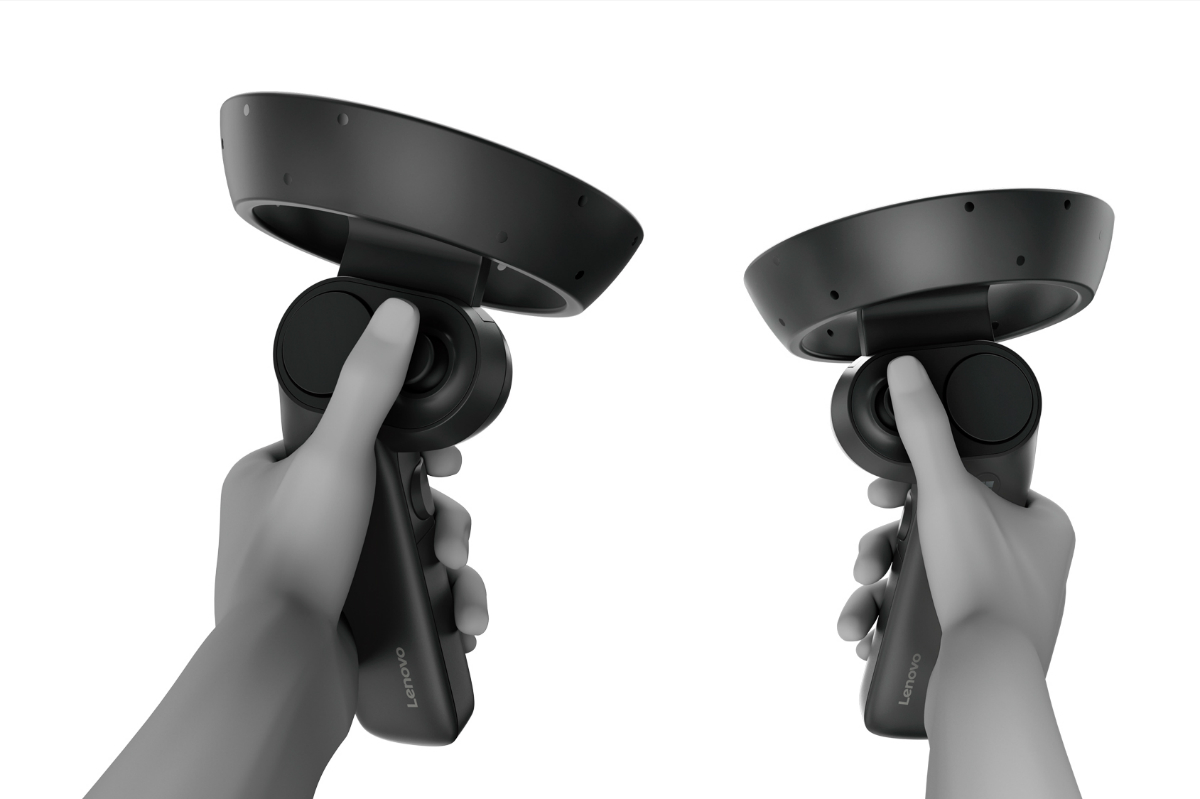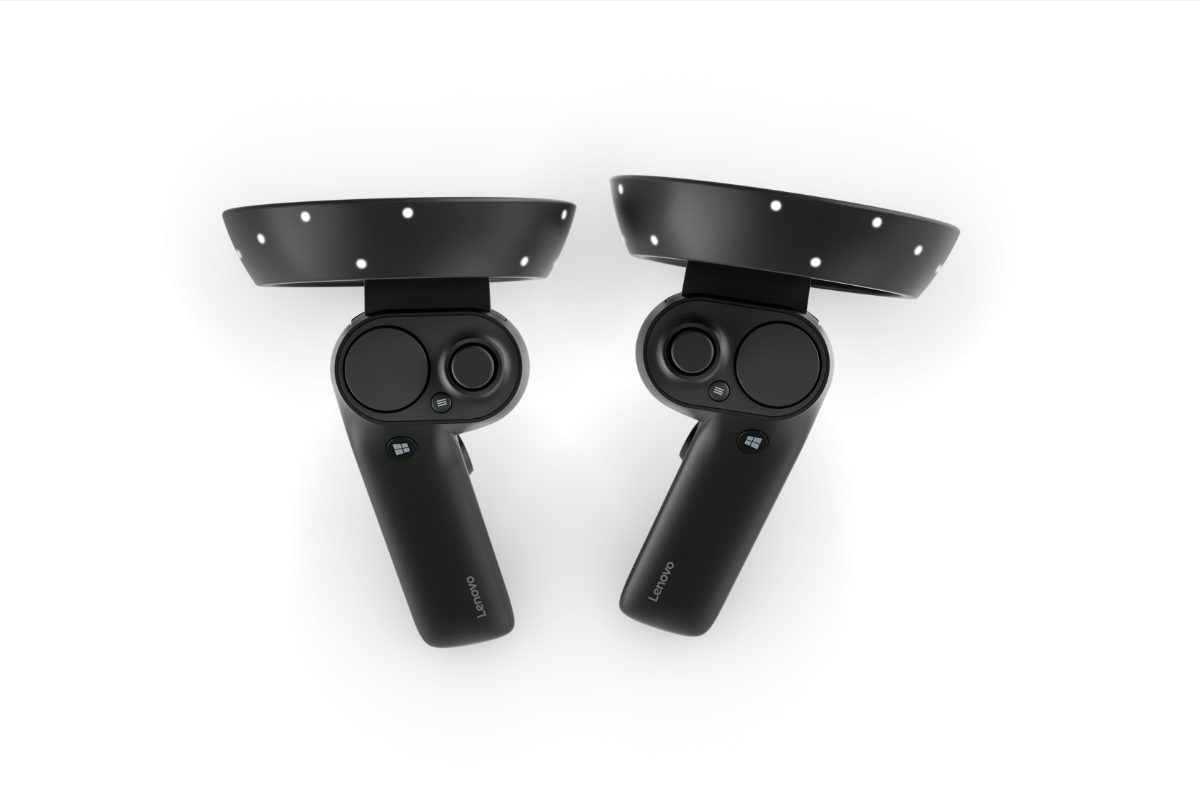
Like all of the WMR headsets, the Explorer is intended to provide an immersive virtual reality experience at a relatively low cost and without the need for a high-powered, expensive PC. Accordingly, the Explorer will be priced at a $349 and the Explorer with its optional Motion Controllers will cost $449.
Here are the Lenovo Explorer’s specifications:
| Dimensions: | 185 x 94.8 x 102 mm |
| Weight: | 380 grams |
| Camera | 2x 6DOF Tracking Camera |
| I/O | HDMI 2.0, USB 2.0 |
| Control | Motion controller, 6DOF controller, keyboard & mouse |
| PC Min. Spec. | Intel Core i5, Intel HD 620 graphics |
In addition, the Explorer supports the two levels of WMR PCs that Microsoft recently announced. That means that a base WMR PC equipped with integrated graphics will be able to drive the Explorer in running immersive content at 60 frames per second (FPS) while a WMR Ultra PC will be able to enable 90 FPS performance. Here are the minimum required specs for each level of performance:
| Performance: | 90Hz |
| CPU: | Intel Core i5 (NB), Intel Core i3 (DT) |
| GPU: | Discrete Nvidia GTX 965M, AMD RX 460M |
| Connectivity: | HDMI 2.0 or DisplayPort 1.2 |
| RAM: | 8GB |
| Storage: | More than 10GB additional free space |
| USB: | USB 3.0 Type-A or USB 3.1 Type-C Port with DisplayPort |
| Bluetooth: | Bluetooth 4.0 for accessories |
| Performance: | 60Hz |
| CPU: | Intel Core i5 (NB), Intel Core i3 (DT) |
| GPU: | Integrated Intel HD 620 |
| Connectivity: | HDMI 1.4 or DisplayPort 1.2 |
| RAM: | 8GB |
| Storage: | More than 10GB additional free space |
| USB: | USB 3.0 Type-A or USB 3.1 Type-C Port with DisplayPort |
| Bluetooth: | Bluetooth 4.0 for accessories |
Like other WMR headsets, the Explorer needs no external sensors for its basic functionality. Thus, it’s simply plugged into a PC’s USB and HDMI ports via the built-in Y-cable. The optional Motion Controllers provide for more natural and fine-grained actions when in mixed reality environments, while an Xbox controller can also be used for navigating through some VR games.
Lenovo also touts enhanced productivity by using the Explorer with a keyboard, mouse, and Cortana voice commands, while accessing the WMR “cliff house” VR environment provides access to more than 20,000 Windows apps available in the Microsoft Store. Users can, therefore, get work done in VR, and then switch over to the virtual Escape and Play theatre to take a break from working by accessing 3D, 360-degree, and 4K content. In addition, Lenovo is providing access to more than 100 upscaled VR games through the Lenovo Entertainment Hub.
Lenovo plans to make the Explorer available in October, at $349 for the headset alone and $449 with the Motion Controllers.
